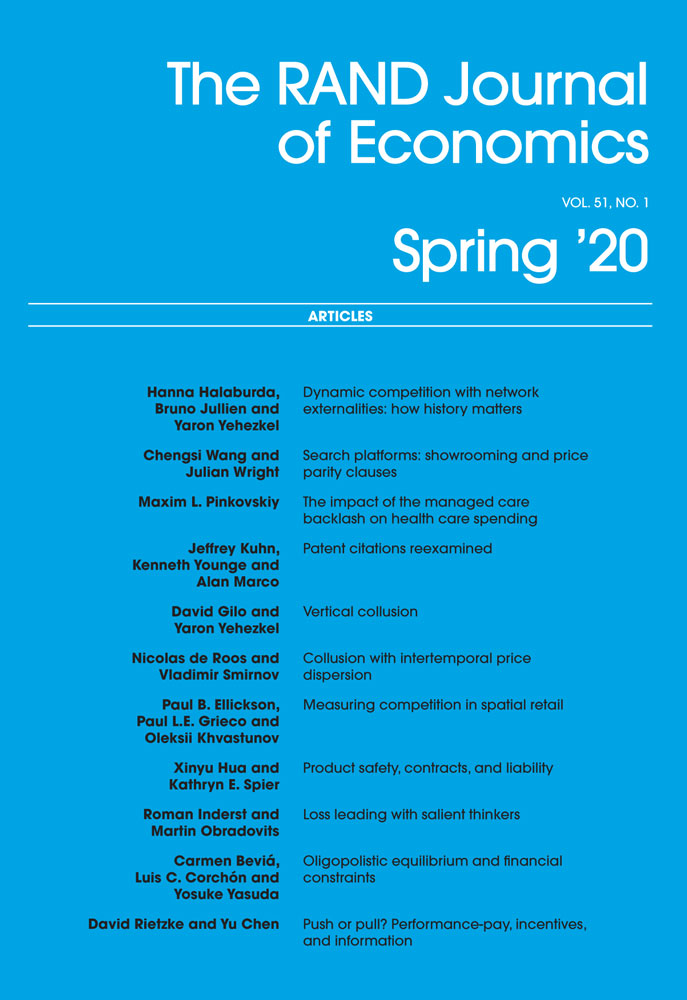Oligopolistic equilibrium and financial constraints
Abstract
We model a dynamic duopoly in which firms can potentially drive their rivals from the market. For some parameter values, the Cournot equilibrium outcome cannot be sustained in an infinitely repeated setting. In those cases, there is a Markov perfect equilibrium in mixed strategies in which one firm, eventually, will exit the market with probability one. Producer surplus in the maximum collusive outcome is greater under bankruptcy consideration, because the outcome that maximizes joint profits is skewed in favor of the more efficient firm. Consumer surplus and social welfare also increase in many cases, although those effects are generally ambiguous.




